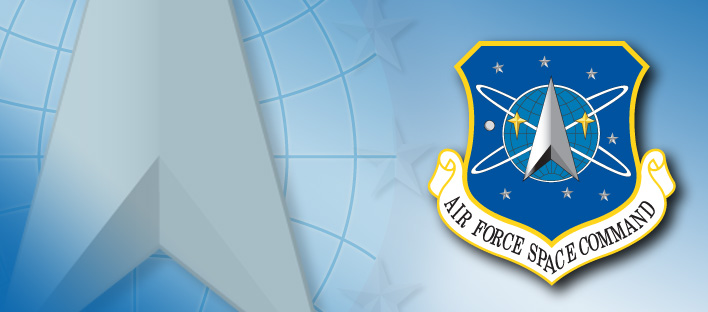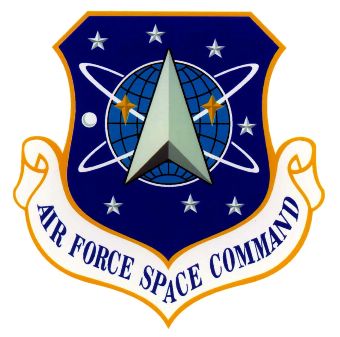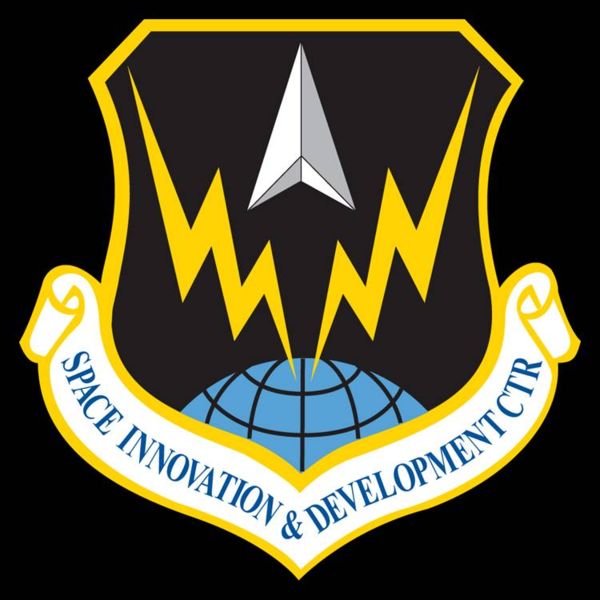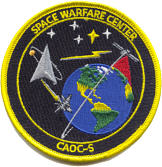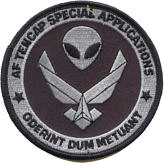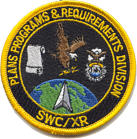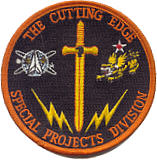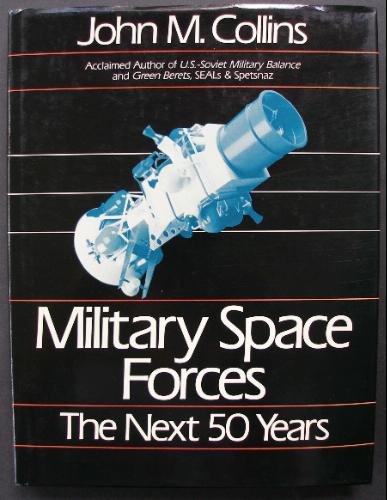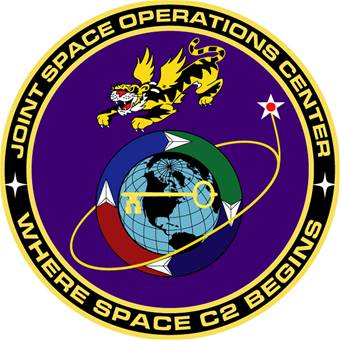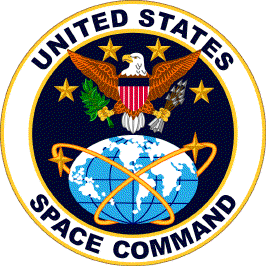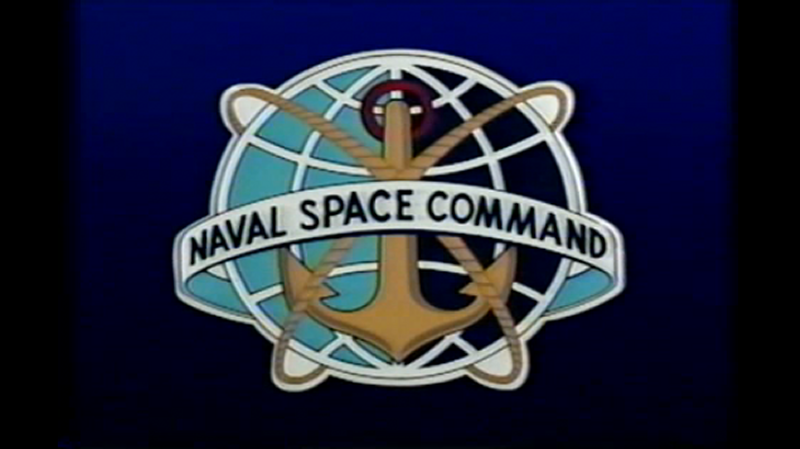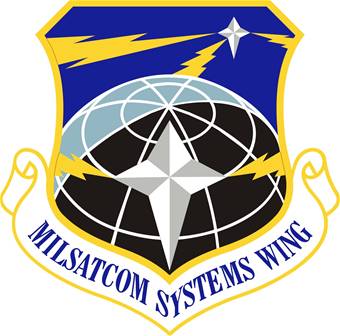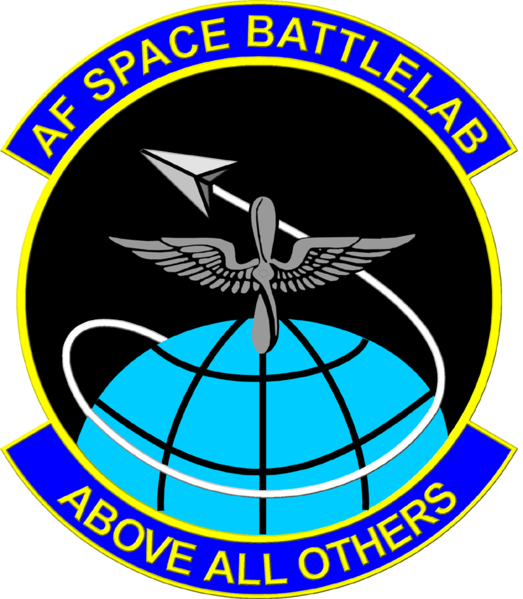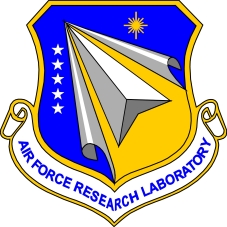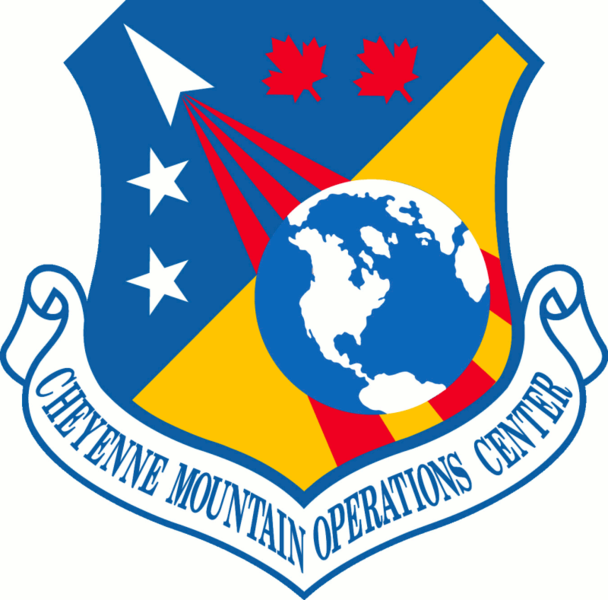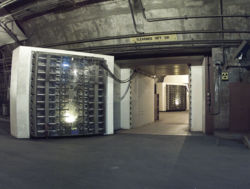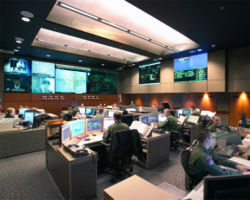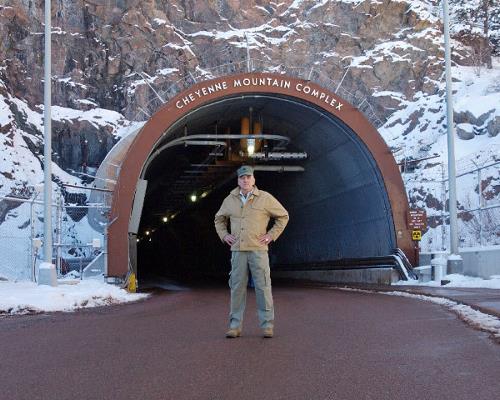|
Space Command |
||||
|
.
Air Force Space Command (AFSPC) is a major command of the United States Air Force with headquarters at Peterson Air Force Base, Colorado, USA. It was created on September 1, 1982. AFSPC defends the United States through its satellite and intercontinental ballistic missile (ICBM) operations, vital force elements in projecting global reach and global power. Mission The Space Force Mission is to defend the United States through the control and exploitation of space. Air Force Space Command makes space reliable to the warfighter (i.e. forces personnel) by continuously improving the command's ability to provide and support combat forces — assuring their access to space. In addition, the command's ICBM forces deter any adversary contemplating the use of weapons of mass destruction. AFSPC has four primary mission areas:
Approximately 40,000 people, including 25,400 active-duty military and civilians, and 14,000 contractor employees, combine to perform AFSPC missions. Those 25,400 active-duty personnel are divided into approximately 7,100 military employees and 18,300 civilian employees, although their missions overlap. Organization Numbered Air Forces Air Force Space Command has two numbered air forces. The Fourteenth Air Force provides space warfighting forces to U.S. Strategic Command, and is located at Vandenberg AFB, California. They manage the generation and employment of space forces to support U.S. Strategic Command and North American Aerospace Defense Command (NORAD) operational plans and missions. The Twentieth Air Force is located at F.E. Warren AFB, Wyoming and maintains AFSPC's ICBM weapon systems in support of U.S. Strategic Command war plans. Direct Reporting Units Space and Missile Systems Center (SMC) at Los Angeles AFB, California, designs and acquires all Air Force and most Department of Defense space systems. It oversees launches, completes on-orbit checkouts, then turns systems over to user agencies. It supports the Program Executive Office for Space on the NAVSTAR Global Positioning, Defense Satellite Communications and MILSTAR systems. SMC also supports the Titan IV, Defense Meteorological Satellite and Defense Support programs, and Follow-on Early Warning System. In addition, it supports development and acquisition of land-based intercontinental ballistic missiles for the Air Force Program Executive Office for Strategic Systems. The Space Innovation and Development Center (SIDC) at Schriever AFB, Colorado is also part of the command. The center plays a major role in fully integrating space systems into the operational Air Force. Its force enhancement mission looks at ways to use space systems to support warfighters in the areas of navigation, weather, intelligence, communications and theater ballistic missile warning, and how these apply to theater operations. AFSPC is the major command providing space forces and trained ICBM forces for U.S. Strategic Command. AFSPC also supports NORAD with ballistic missile warning information, operates the Space Warfare Center to develop space applications for direct warfighter support, and is responsible for the Department of Defense's ICBM follow-on operational test and evaluation program. Locations AFSPC bases, stations and units include: Cheyenne Mountain Air Force Station, Schriever AFB, Peterson AFB, and Buckley AFB in Colorado; Onizuka Air Force Station, Los Angeles Air Force Base, and Vandenberg Air Force Base in California; Cape Canaveral AFS and Patrick AFB in Florida; Minot AFB and Cavalier AFS in North Dakota; F.E. Warren AFB in Wyoming; Malmstrom AFB in Montana; Clear Air Force Station in Alaska; New Boston AFS in New Hampshire; and Thule Air Base in Greenland. Space capabilities Spacelift operations at the East and West Coast launch
bases provide services, facilities and range safety control for the conduct
of United States Department of Defense (DOD), National Aeronautics and
Space Administration (NASA), and commercial launches. Through the command
and control (largely the domain of the 50th Space Wing) of all DOD satellites,
satellite operators provide force-multiplying effects — continuous global
coverage, low vulnerability and autonomous operations. Satellites provide
essential in-theater secure communications, weather and navigational data
for ground, air and fleet operations, and threat warning. Ground-based
radar and Defense Support Program satellites monitor ballistic missile
launches around the world to guard against a surprise attack on North America.
Space surveillance radars provide vital information on the location of
satellites and space debris for the nation and the world. With a readiness
rate above 99 percent, America's ICBM team plays a critical role in maintaining
world peace and ensuring the nation's safety and security.
Resources AFSPC operates and supports the Global Positioning System, Defense Satellite Communications Systems Phase II and III, Defense Meteorological Support Program, Defense Support Program, NATO III and IV communications and Fleet Satellite Communications System UHF follow-on and MILSTAR satellites. AFSPC currently operates the Atlas II, Delta II, Titan II and Titan IV launch vehicles. This includes all of the nation's primary boosters from the Eastern and Western ranges and range support for the Space Shuttle. AFSPC also operates the nation's primary source of continuous, real-time solar flare warnings. The command also operates a worldwide network of satellite tracking stations to provide communications links to satellites — a system called the Air Force Satellite Control Network. Ground-based radars used primarily for ballistic missile warning include the Ballistic Missile Early Warning System, PAVE PAWS, and PARCS radars. The Maui Optical Tracking Identification Facility, Ground-based Electro-Optical Deep Space Surveillance System, Passive Space Surveillance System, phased-array and mechanical radars provide primary space surveillance coverage. The ICBM force (apart from the SLBMs operated by the US Navy) consists of the Minuteman III missiles that provide the critical component of America's on-alert strategic forces. As the nation's "silent sentinels," ICBMs, and the people who operate them, have remained on continuous around-the-clock alert since 1959 — longer than any other U.S. strategic force. More than 500 ICBMs are currently on alert in reinforced concrete launch facilities beneath the Great Plains. AFSPC is the Air Force's largest operator of UH-1N and HH-1H Huey helicopters, responsible for missile operations support and security. History Missile warning and space operations were combined to form Air Force Space Command in 1982. During the Cold War, space operations focused on missile warning, and command and control for national leadership. In 1991, Operation Desert Storm provided emphasis for the command's new focus on support to the warfighter. ICBM forces were merged into AFSPC in 1993. Point of contact Air Force Space Command
(719) 554-3731 or DSN 692-3731 In Popular Culture In the popular TV series Stargate SG-1 and Stargate Atlantis, the Stargate Program is run by the Air Force Space Command. The AF Space Command Patch was worn on the uniform of personnel aboard the Prometheus, Earth's first operational deep space battle cruiser. SOURCE: afspc.af.mil |
||||
|
.
The Space Innovation & Development Center (SIDC),
formerly the Space Warfare Center (SWC), is a military unit of the United
States Air Force. It is directly under Air Force Space Command (AFSPC)
and resides at Schriever Air Force Base, Colorado. The SIDC includes the
AF Space Battlelab (SB)[1], Shield, and the 17th Test Squadron (17 TS).
Update Mission Statement as of April 2007 Mission The Space Innovation and Development Center at Schriever Air Force Base, Colo., is "unlocking the potential" as premier innovators, integrators and operational testers of air, space and cyberspace power to the warfighter. The center's mission is to advance full-spectrum warfare through rapid innovation, integration, training testing, and experimentation. Space Innovation and Development Center at Schriever Air Force Base, Colo Schriever
Air Force Base - SIDC
DISCLAIMER NOTE: All images and Text on this page are courtesy of the USAF, Space Command and related agencies mentioned on this page. The source for the information on this page has been gathered for educational purposes only from their official website public press releases. No association with, or endorsement of, this website with any of the mentioned agencies is either claimed or implied. |
||||
|
Mission The mission of the Space Warfare Center (SWC) is to
advance Air Force, joint and combined space warfare through innovation,
testing, tactics development and training.
Background In the fall of 1992, an Air Force Blue Ribbon Panel on space recommended establishing a dedicated Space Warfare Center to examine the capabilities of space-based assets versus the actual enhancements gained from them. During Desert Storm, combat operations relied on space support more than in any past conflict. However, an analysis of these operations revealed several shortfalls in the Air Force’s ability to take advantage of capabilities space has to offer. General Charles Horner, Commander, Air Force Space Command (AFSPC) officially dedicated the SWC on December 8, 1993. In 1995, the 17th Test Squadron (17 TS) was established and the 576th Flight Test Squadron (576 FLTS) aligned under SWC. In 2000, the SWC established the 595th Test and Evaluation Group (595 TEG) and 310th Space Group (Air Force Reserve) established the 14th Test Squadron (14 TS) as a sister squadron to the 17 TS. In 2001, the SWC stood up the 527th Space Aggressor Squadron (527 SAS) and the USAF Space Operations School (SOPSC). In 2002, the SWC stood up Detachment 1 at Nellis AFB, NV and Detachment 2 at Langley AFB, VA. Both Detachments are extensions of the SWC and provide air and space integration to the warfighter through a variety of efforts heavily focused on strengthening relationships with government and industry mission partners. In August 2002, the 595th reorganized as the 595th Space Group and took control of the 527th and SOPSC. In November 2002, the 595th established the Space Range Management Office (SRMO). In September 2003, the SWC stood up a fifth division, the Integration Division (SWC/XI). More recently, in October 2003, the 310th Space Group established the 26th Space Aggressor Squadron (26 SAS) as a sister squadron to the 527 SAS. Organization SWC's two-fold mission to support warfighters with space solutions and develop concepts for space superiority is carried out by the following five organizations: AF Tactical Exploitation of National
Capabilities (AF TENCAP) (TC)
In 1977 Congress directed the establishment of Air Force TENCAP with three primary missions: exploiting space systems for tactical applications through rapid prototyping projects; influencing the design of future space systems for tactical applications; and educating warfighters about the capabilities and tactical utility of space systems. The SWC serves as the executive agent of AF TENCAP on behalf of warfighters and is teamed with the Space Applications Project Office to develop and provide support to Air Force agencies and the Combat and Mobility Air Forces. AF TENCAP demonstrates leading edge space technologies with potential to enhance combat capabilities of units in the field and transitions these combat systems to warfighters in a timelier manner than through traditional acquisition processes. AF TENCAP is responsible for keeping abreast of the latest technologies and influencing emerging space systems to make them more supportive of fielded combat forces. Air Force Space Battlelab (SB) The mission of the Space Battlelab is to transform space capabilities into solutions for today’s warfighting problems. Through networking with industry, academia, and service laboratories, SB leverages leading edge space technology to enhance Air Force core competencies. Two flights perform the operations. The Concepts Development Flight ensures the Space Battlelab is focused on the most pressing operational problems and determines the best available solutions. They produce a detailed campaign plan as a guide for the second flight, the Demonstration Flight, to rapidly show the effectiveness of a proposed solution in an operational environment. Drawing on test experts such as Air Force Operational Test & Evaluation Center (AFOTEC) and the 595th Space Group, Battlelab project managers use modeling and simulation, wargaming, exercise evaluations and prototype demonstrations to quickly measure military value of promising concepts. The overall effectiveness of a technology is captured in a final report that provides detailed analysis of demonstration results and recommendations for concept transition. SB processes are optimized to evaluate concepts and promising ideas from military personnel, industry, and citizens. Integration Division (XI) The Integration Division is directly involved in integrating space systems into air and information warfare. The Space Applications & Integration Facility (SPAIF) works to improve command and control processes and operates a facility that emulates functions of a CAOC. This facility is designed to demonstrate space systems and train people on their use. The Aerospace Fusion Section’s mission is to provide real time data fusion systems for targeting, intelligence, weapons of mass destruction (WMD) warning and enhanced missile defense operations. Also, XI’s Wargaming Branch promotes the understanding and effective use of space power through modeling, simulation and analysis. A principal focus of the directorate is the planning, execution, and analyzes of the Schriever Wargames. Schriever Wargames are a series of space-focused wargames designed to evaluate space’s contribution to a theater war. They are currently working the next iteration wargame, Schriever III, scheduled to execute in 2005. Plans, Programs and Requirements
(XR)
Plans, Programs and Requirements is the backbone of the SWC, providing overarching support to all other SWC divisions in the following areas: communications and computers, security, acquisition, logistics, policy, planning, programming, financial support, manpower and personnel. XR is the SWC Commander’s authority on reviewing, coordinating and consolidating all SWC inputs to AFSPC/XP’s Modernization Planning Process (MPP) and AFSPC/DR’s associated Requirements Generation System (RGS). As the lead SWC programming and requirements agency, XR integrates SWC views and initiatives into these AFSPCE-level programming systems to solve warfighters’ deficiencies through space capabilities. As SWC’s executive agent for the submitting Program Objective Memorandum inputs, XR develops strategy, policy, doctrine and long-range plans to control and exploit space, and programs and advocates manpower, resources, and organizational development for long-term success of SWC’s mission. 595th Space Group The mission of the 595th Space Group is to enhance, and provide confidence in, Air Force warfighting capabilities through advanced training, education, tactics development and operational testing. 595 SG is composed of the 17th Test Squadron (17 TS), 14th Test Squadron (14 TS) [as a Reserve component], the 576th Flight Test Squadron (576 FLTS), the 527th Space Aggressor Squadron, the 26th Space Aggressor Squadron (26 SAS) [as a Reserve component], the Space Range Management Office (SRMO) and the Space Operations School (SOPSC). The mission of 17 TS is to validate and enhance warfighter capabilities through testing and evaluation of space systems. 17 TS is responsible for planning, executing and reporting on all Force Development Evaluation, tactics and concepts testing, and command-directed testing of AFSPC's space assets. 17 TS is chartered to determine the effectiveness and suitability of AFSPC’s operational space systems. The mission of 14 TS is to test,
evaluate and exploit aerospace systems to educate and train US and Allied
warfighters on combat support capabilities, tactics and vulnerabilities.
14 TS is a USAF Reserve squadron that augments 17 TS. This includes tests
for all four space mission areas: space control, space forces support,
force enhancement and force application.
The mission of 576 FLTS is to execute the Joint Chiefs of Staff-directed intercontinental ballistic missile Force Development Evaluation test program and execute Air Force Space Command's operational tests for the Department of Defense. 576 FLTS plans and performs ground, flight and space system tests in operationally representative environments and collects, analyzes and reports performance accuracy, anomaly assessment, reliability, aging and surveillance data to the Joint Staff, Air Staff, U. S. Strategic Command and other higher headquarters. In executing assigned test activities, 576 FLTS conducts launch operations at the Western Range, conducts field tests at operational units, refines maintenance procedures and interfaces with AFOTEC, System Program Offices and other higher headquarters personnel. 527 SAS is modeled on the concepts and methodology of “dissimilar air combat” training created by the USAF air aggressor program (i.e.- 527 SAS replicates adversary capabilities to improve combat training). The squadron’s goal is to increase awareness of threats from space and to improve our ability to defend against them. Additionally, the 26 SAS is specifically chartered to augment the 527th Space Aggressor Squadron in replicating adversary space capabilities to support Air Expeditionary Force spin-up, world-wide exercises, training and testing to enhance US space superiority, force readiness and survivability. The mission of the SRMO is to ensure test & training for air, space, and information operations capabilities are integrated into ranges and air and space operation centers and provide infrastructure and expertise to test and train space systems and personnel. SOPSC is Air Force Space Command’ s center for advanced space education and training. SOPSC leads the Air Force in developing space training courses which provide a wide range of space curricula. In addition, SOPSC is the focal point for tactics, techniques and procedures development within AFSPC. They have published the Air Force Tactics, Techniques and Procedures (AFTTP) 3-1, Vol 28 Tactical Employment, Space -- the first comprehensive volume on space for warfighters. Finally, the Group also maintains an Intelligence Branch, which is the focal point for intelligence support to all SWC organizations. The branch serves as the primary provider of imagery tasking, processing, exploitation and dissemination services and also provides operational general military intelligence all-source analysis for SWC organizations. Detachments The SWC also operates two detachments. SWC Detachment 1 at Nellis AFB NV, is collocated with Red Flag operations conducted by the 414th Combat Training Squadron. Det 1 looks at how best to integrate space into the full-spectrum aerospace range envisioned by Air Combat Command. Detachment 2 at Langley AFB VA, teams with the Aerospace Command & Control Intelligence Surveillance Reconnaissance Center (AC2ISRC) and with the Combined Air Operations Center-Experimental, or CAOC-X. Det 2 helps ensure emerging CAOC capabilities mesh well with and fit the needs of all CAOC users -- while especially considering space capabilities. Recently, Det 2 was also named as AFSPC’s liaison to Joint Forces Command. Space Innovation and Development Center |
||||
Papers and Journals:
|
||||
|
...
|
||||
|
.
The Joint Space Operations Center (JSpOC) is a synergistic command and control weapon system focused on planning and executing USSTRATCOM's Joint Functional Component Command for Space (JFCC SPACE) mission. The purpose of the JSpOC is to provide a focal point for the operational employment of worldwide joint space forces, and enables the Commander, JFCC SPACE (CDR JFCC SPACE) to integrate space power into global military operations. The JSpOC includes the personnel, facilities and equipment necessary to provide CDR JFCC SPACE the ability to plan and execute worldwide space forces. It is composed of four core divisions: Strategy (SD), Combat Plans (CPD), Combat Operations (COD), and Intelligence, Surveillance and Reconnaissance (ISRD). Three products are used to plan and execute JFCC SPACE forces in support of the mission: · The Space Operations Directive (SOD), produced
by Strategy, the Master Space Plan (MSP), and a weekly Joint Space Tasking
Order (JSTO), both produced by Combat Plans.
All three products can be effectively matched to synchronize with ongoing exercise or real-world wartime operations in any geographic combatant command. Combat Operations effectively monitors the execution phase of operations and provides information on tasking responses to CDR JFCC SPACE, the other JSpOC divisions, upper command echelons, and theater space personnel for their space situational awareness. In doing so, they create the Single Integrated Space Picture (SISP). The Intelligence, Surveillance, and Reconnaissance Division is integrated into all phases of the operational cycle, providing pertinent space intelligence information to the other three divisions in support of the strategy, planning and operations monitoring efforts. JSpOC Space Data The JSpOC's Space Situational Awareness (SSA) Operations Cell maintains space data for all Earth orbiting man-made objects. JSpOC unclassified space data is available for authorized US government, and US government support contractors. In order to access the JSpOC Site Data files, you MUST have a valid USSTRATCOM Form-1 and GCSS-AF Form 41 on file with the JFCC SPACE/J95 office (links provided above). Note: A USSTRATCOM Form-1 is valid for one year only.
You must submit a new form annually for recurring access to orbital data.
Please Note: Form-1 requests sent to the previous email address at Cheyenne Mountain will not be processed. Point of Contact For Form-1 Approval Inquiries:
|
||||
|
.
United States Strategic Command (USSTRATCOM) is one of nine Unified Combatant Commands of the United States Department of Defense which controls the nuclear weapons assets of the United States military. It is also a globally focused command and a global integrator charged with the missions of Space Operations; Information Operations; Integrated Missile Defense; Global Command and Control; Intelligence, Surveillance and Reconnaissance; Global Strike; Strategic Deterrence; and Combating Weapons of Mass Destruction. It is headquartered at Offutt Air Force Base, Nebraska. Mission Provide the nation with global deterrence capabilities and synchronized DoD effects to combat adversary weapons of mass destruction worldwide. Enable decisive global kinetic and non-kinetic combat effects through the application and advocacy of integrated intelligence, surveillance and reconnaissance (ISR); space and global strike operations; information operations; integrated missile defense and robust command and control. Unique Command Responsibilities USSTRATCOM combines the synergy of the U.S. legacy nuclear command and control mission with responsibility for space operations; global strike; Defense Department information operations; global missile defense; global command, control, communications, computers, intelligence, surveillance, and reconnaissance (C4ISR); and combating weapons of mass destruction. This dynamic package gives the President and the Secretary of Defense a unified resource for greater understanding of specific threats around the world and the means to respond to those threats rapidly. USSTRATCOM exercises command authority over four joint functional component commands, also known as JFCCs as well as Joint Task Forces and Service Components. This combination of authorities, oversight, leadership and management enables a more responsive, flattened organizational construct according to the commands leadership. Leadership General James E. Cartwright is the commander of USSTRATCOM, and serves as the senior commander of the joint military forces from all four branches of the military assigned to the command. General Cartwright is the leader, steward and advocate of the nation's strategic capabilities. His responsibilities include integrating and coordinating the necessary command and control capability to provide support with the most accurate and timely information for the President of the United States, the Secretary of Defense, and to regional combatant commanders. Organization Primary operational units
Additionally, JIOWC is a functional command, per USSTRATCOM homepage, not an "Organizational and Support Units". Task Forces USSTRATCOM relies on various task forces for the execution of its global missions. These include:
General Cartwright is exploring ways to incorporate innovative collaborative tools into what has traditionally been considered a very centralized military organization. Speaking at a recent convention General Cartwright said, "Where I would like to be is well outside the comfort zone of my organization. But what we've started with is just some simple 'blogging' tools, to try to change the culture a little bit; to try to allow people to contribute." [3] History On June 1, 1992, President George H.W. Bush established the U.S. Strategic Command out of the Strategic Air Command and other Cold War military bodies, now obsolete due to the change in world politics. The Command unified planning, targeting and wartime employment of strategic forces under one commander. Day-to-day training, equipment and maintenance responsibilities for its forces remained with the Air Force and Navy. As a result of the 2002 Nuclear Posture Review, the Cold War system of relying solely on offensive nuclear response was modified. Shortly after a meeting between President George W. Bush and Russian President Vladimir Putin in Moscow in May 2002, a summit was held during which both leaders signed a treaty promising bilateral reductions that would result in a total of 1,700 to 2,200 operationally deployed strategic nuclear weapons for each country by the year 2012. SpaceCom The United States Space Command (USSPACECOM) was a unified command of the United States military created in 1985 to help institutionalize the use of outer space by the United States. The Department of Defense merged U.S. Space Command with the United States Strategic Command on October 1, 2002. Military space operations coordinated by USSC proved to be very valuable for the U.S.-led coalition in the 1991 Persian Gulf War. The U.S. military has relied on communications, intelligence, navigation, missile warning and weather satellite systems in areas of conflict since the early 1990s, including the Balkans, Southwest Asia, and Afghanistan. Space systems are considered indispensable providers of tactical information to U.S. warfighters. As part of the ongoing initiative to transform the U.S. military, the Department of Defense merged U.S. Space Command with the United States Strategic Command on October 1, 2002. The merger was intended to improve combat effectiveness and speeds up information collection and assessment needed for strategic decision-making. On June 26, 2002, Secretary Donald Rumsfeld announced that U.S. Space Command would merge with USSTRATCOM as part of the ongoing initiative to update the Federal military. As part of a change to the Unified Command Plan, President Bush migrated space missions from the former USSPACECOM and subsequently nominated Admiral James Ellis to be commander of the new unified command, which would retain the U.S. Strategic Command name and would be headquartered at Offutt Air Force Base. The activation of the new USSTRATCOM took place October 1, 2002. The merged command was responsible for both early warning of and defense against missile attack as well as long-range strategic attacks. President Bush signed Change Two to the Unified Command Plan on January 10, 2003, and tasked USSTRATCOM with four previously unassigned responsibilities: global strike, missile defense integration, Department of Defense Information Operations, and C4ISR (command and control, communications, computers, intelligence, surveillance, and reconnaissance). This combination of roles, capabilities, and authorities under a single unified command was unique in the history of unified commands. JFCC-SGS Joint Functional Component Command for Space and Global Strike (JFCC SGS) was split into Joint Functional Component Command for Global Strike and Integration and Joint Functional Component Command for Space. Space and Global Strike Reorganization After some consideration concerning the separation of the JFCC for Space and Global Strike missions, according to AirForceTimes.com[4] and InsideDefense.com,[5] General Cartwright is now in the process of separating the JFCC for Space and Global Strike into two individual JFCCs: a JFCC for Space (JFCC Space) and a JFCC for Global Strike and Integration (JFCC GSI).[6] U.S. Strategic Command officials are expected to deliver a detailed plan on the separation to General Cartwright for approval by September 2006.[7] Some officials believe this will allow each to focus more effectively on its primary mission and allow the mission of space to have focused attention and be better integrated with other military capabilities. This comes after some concern by officials and lawmakers such as U.S. Senator Wayne Allard (R-Colo.), an outspoken advocate for national security space activities, complained in a March 2006 memo to Defense Secretary Donald Rumsfeld about what he sees as a declining emphasis on space within the U.S. Department of Defense and specifically the way space has been organized at U.S. Strategic Command.[8] However, to the contrary, there are officials who believe the reorganization into the current setup where the space mission was folded into U.S. Strategic Command and merged into a JFCC for Space and Global Strike creates better synergy and integration of space with other interrelated capabilities rather than have a single entity devoted to space. Commanders
|
||||
|
...
Overview: USSPACECOM provides joint employment of military forces and operational support to other unified, combatant commands. Its mission is to conduct joint space operations in accordance with the Unified Command Plan assigned missions: Space Force Support, Space Force Enhancement, Space Force Application, and Space Force Control. Description: USSPACECOM is a unified command of the DoD supported by three component commands: AFSPACECOM, NAVSPACECOM, and USARSPACE. USSPACECOM conducts all integrated attack warning and space operations including control of space, direction of space support activities, and use of space assets to enhance the force effectiveness of other combatant commands. USSPACECOM is headquartered at Peterson AFB, Colorado Springs, CO. The command operates the Space Defense Operations Center (SPADOC), the Space Surveillance Center (SSC), the Missile Warning Center (MWC), and the Joint Space Intelligence Center (JSIC). It also directs space support operations for assigned spacecraft systems, including the Defense Support Program (DSP), Defense Satellite Communications System (DSCS), Global Positioning System (GPS), Transit Maritime Navigation System (TRANSIT), Fleet Satellite Communications (FLTSATCOM), Air Force Satellite Communications (AFSATCOM) System payloads, and the Defense Meteorological Satellite Program (DMSP). Point of Contact: U.S. Space
Command, USSPACECOM, Open Phone: (719) 554-6889.
Date Of Information:: 21 November 1997 |
||||
|
...
Overview: NAVSPACECOM manages naval space activities and operates space systems while focusing on warfighter support. In addition, it leverages National, DoD and civil space resources to guarantee that the naval warfighter gets the maximum utility out of space-based resources. Description: Headquartered at Dahlgren, Virginia, NAVSPACECOM began operations October 1, 1983. NAVSPACECOM uses the medium of space and its potential to provide essential information and capabilities to ashore and afloat naval forces by:
Point of Contact: U.S. Space
Command, USSPACECOM, Open Phone: (719) 554-6889.
Road Map Production Date: 12 July 1999 |
||||
Overview: This function has now been incorporated into the National Security Space Architect (NSSA), according to "Decision Memorandum on Department of Defense Reform Initiative Directive #11 - Reorganization of DoD Space Management Responsibilities," 31 July 1998. The Under Secretary of Defense (USD) for Acquisition and Technology (A&T) established the Office of the Space Architect to consolidate the responsibilities for DoD space mission and system architecture development into a single organization. Description: This organization was responsible for integrating space architectures and systems; thereby, eliminating unnecessary vertical stove piping of programs. This consolidated design acheives efficiencies in acquisition and future operations through program integration and improving space support to military operations. The Space Architect obtained direct support from various space planning and development organizations across the Federal Government and industry for space architecture planning and development. This support included Federally Funded Research Development Centers (FFRDCs) and System Engineering and Technical Assistance (SETA) contractors. The DoD Space Architect's objective was to develop space architectures across the range of DoD space mission areas, integrate requirements, and coordinate with Intelligence Community counterparts. As a joint technical agency, this office developed architectural recommendations to enhance the utility and affordability of current and future space systems. Its first major task was to develop a future MILSATCOM architecture that encompasses core DoD capabilities, allied, civil and commercial functions, and a global broadcast capability. Point of Contact: Maj Mike LaPointe,
NSSA, Open Phone: (703) 325-6422, DSN 221-6422.
Date Of Information: 14 August 1998 |
||||
|
.
The Army Space Program Office (ASPO) is responsible for the Army's Tactical Exploitation of National Capabilities (TENCAP). The program focuses on exploiting current and future tactical potential of national systems and integrating the capabilities into the Army's tactical decision-making process. Description: (Army TENCAP systems enable the tactical commander to see and hear deep in today's battlefield and then assess the impact of shooting deep. The ASPO has successfully fielded more than 60 systems and is constantly exploring ways to integrate advanced technologies into its inventory. Primary ASPO missions include:
Army Space Program Office (ASPO), ASPO, Open Phone: (703) 275-5616, DSN 235-5616. Date Of Information : 10 November 1997 SOURCE: National Security Space Road Map Team
|
||||
|
...
Overview: The purpose of the Space Battlelab is to rapidly measure the worth of new ideas involving changes to the way the Air Force currently organizes, trains, equips, executes plans, and commands. The Space Battlelab offers the opportunity for demonstrating innovative concepts to advance the Air Force's core competencies. Within that general scope, there is no restriction on the concepts they can and do explore. Description: The Space Battlelab (SB) is located in the Joint National Test Facility (JNTF) at Schriever AFB, Colorado. It is a subordinate unit of the Space Warfare Center (SWC) and operates under the direction of the Air Force Space Command. The Space Battlelab's mission is to identify innovative space operations and logistics concepts while rapidly measuring their potential for advancing the Air Force core competencies and joint warfighting capabilities. The battlelab uses field ingenuity, modeling and simulation, and actual employment of exploratory capabilities in operational environments to develop and test these ideas. The Space Battlelab draws upon Active, Reserve, and National Guard capabilities/expertise to measure the potential worth of these concepts. This is in contrast to the test centers that use formal test projects to prove the abilities of new equipment. Point of Contact : U.S. Space
Command, USSPACECOM, Open Phone: (719) 554-6889.
Date Of Information: 30 June 1997 |
||||
Overview: The Space Warfare Center (SWC) is the Air Force Space Command's (AFSPACECOM's) direct reporting unit responsible for improving military operations through the exploitation of space power. Description: The SWC plays a major role in fully integrating space systems into the operational Air Force by enhancing AFSPACECOM's four core mission areas: space force support, space force enhancement, space force application, and space control. The SWC accomplishes this mission by recommending, designing, demonstrating, and testing improved applications of space power for the warfighter. The SWC's force enhancement mission looks at ways to use space systems to support warfighters in the areas of navigation, weather, intelligence, communications, and theater ballistic missile warning and how these apply to theater operations. Space systems enable and support military operations, from training and deployment to guiding weapons to targets. The SWC demonstrates the potential of space systems in warfighting scenarios by working with commanders to integrate Air Force space systems into war plans and exercises. It also develops an academic curriculum to educate service members about the capabilities of space systems and their potential military applications. The SWC executes the following missions:
U.S. Space
Command, USSPACECOM, Open Phone: (719) 554-6889.
Date Of Information: 21 November 1997 |
||||
|
Overview: The Space Test Program (STP) is a part the Air Force Space and Missile Systems Center, Space and Missile Test and Evaluation Directorate located at Kirtland AFB in Albuquerque, New Mexico. The DoD Space Test Program was created in May 1965 as a multi-user space program whose role is to be the primary provider of spaceflight for the entire Department of Defense space research community (this role was revalidated in a Nov 1995 memo from the Secretary of Defense). The Air Force is the executive agent for this DoD program. The primary objective of STP is to fly the maximum number of DoD space research experiments possible consistent with priority, opportunity and available funding. From the first launch in Jun 1967 to Jun 1997 over 400 experiments have been flown on over 120 missions using dedicated free-flyers, the space shuttle or piggyback payload opportunities. Description: The STP uses a wide variety of platforms to host space research and development experiments including Small Class Spacecraft, Medium Class Spacecraft, the Space Shuttle, and Piggybacks on other spacecraft. Small class spacecraft range from 500 to 1000 lbs and have been launched to a wide array of altitudes and inclinations. The original common small spacecraft bus was the Space Test Experiments Platform (STEP); which has been used to host a wide variety of experiments. Medium class spacecraft (3000 to 6000 lbs) host multiple experimental payloads and have been launched to a wide array of altitudes and inclinations. The next medium class spacecraft mission is ARGOS, a 6000 lb which will carry nine experiment payloads weighing over 3000 lbs. Space Shuttle flights offer short duration mid-deck and cargo bay missions where experimental payloads use the Orbiter as a spacecraft bus. The Shuttle can also deploy spacecraft and experiments in orbit, then retrieve them up to years later (e.g. Long Duration Exposure Facility). SMC/TE has flown payloads on over 85 Shuttle missions. Shuttle missions also offer the unique capability of manned assistance and return from orbit. In addition to the other modes of spaceflight, STP also arranges flights of opportunity ("piggyback" missions) on domestic and foreign spacecraft. A typical piggyback mission uses the host spacecraft for various combinations of bus functions (e.g. power supply, telemetry, pointing, and thermal control). The Space Test Program manages the DoD SERB Process, described below:
Air Force
Point of Contact: Maj Mike LaPointe,
NSSA, Open Phone: (703) 325-6422, DSN 221-6422.
Date Of Information: 21 November 1997 |
||||
|
Overview: The Space and Missile Systems Center (SMC) strengthens America's security by providing integrated and affordable systems for the control and exploitation of air and space. Description: The Space and Missile Systems Center (SMC), as part of the Air Force Materiel Command, is responsible for research, development, acquisition, on-orbit testing, and sustainment of military space and missile systems. With its headquarters at Los Angeles Air Force Base, California, SMC and its subordinate organizations employ more than 8,500 people with an annual budget of $5.5 billion. Key subordinate organizations include: 377th Air Base Wing and the Phillips Laboratory at Kirtland AFB, New Mexico, the Rocket Propulsion Directorate at Edwards AFB, California., and the Geophysics Directorate at Hanscom AFB, Massachussets. On-orbit support facilities are located both at Onizuka AFB, California and Schriever AFB, Colorado. SMC provides the Air Force's Program Executive Officer for Space functional staff support for the Defense Satellite Communications System, Milstar Satellite, Defense Support Program, Titan launch vehicles, and the Ballistic Missile Defense Office programs. SMC also provides functional staff support for silo based ICBM programs to the Air Force's Program Executive Officer for Strategic Systems. In addition, SMC supports Air Force Space Command at Peterson AFB, Colorado, with the functions of launch, on-orbit satellite tracking, data acquisition, and command and control of DOD satellites. SMC traces its origins to the Western Development Division. In 1954, it was established by a group of scientists and engineers tasked to develop the country's first intercontinental ballistic missile. By1957, Air Force missile and space activities were managed by successor organizations of the Western Development Division. In 1967, all ballistic missile and space systems programs were managed by the Space and Missile Systems Organization. In October 1979, the ballistic missile and space activities of the organization were divided into separate organizations, reflecting the growing importance of space systems to operational commands and the presidential decision to proceed with development of the Peacekeeper missile. From this reorganization, the Space Systems Division was formed. On July l, 1992, the organization's headquarters, Air Force Systems Command, was deactivated and the Air Force Materiel Command was activated. On the same day, the Space and Missile Systems Center was activated under the Air Force Materiel Command. Point of Contact: National
Security Space Road Map Team, NSSA, Open Phone: (703)808-6040, DSN
898-6040.
Date Of Information: 21 November 1997 |
||||
|
Overview: According to "Decision Memorandum on Department of Defense Reform Initiative Directive #11 - Reorganization of DoD Space Management Responsibilities," 31 July 1998, "...space policy, space systems and architectures, space acquisition and management, and space integration functions of the DUSD (Space) will be realigned to the Office of the Assistant Secretary of Defense for Command, Control, Communications, and Intelligence (OASD (C3I))." The Deputy Under Secretary of Defense for Space was the principal defense policy advisor to the Under Secretary of Defense for Acquisition and Technology. Under the direction of the Under Secretary of Defense, DUSD(Space) exercised policy and resource oversight over all Department of Defense space and space-related activities. Description: The DUSD (Space) was the principal staff assistant and advisor in the Office of the Secretary of Defense (OSD) for space matters. The DUSD (Space) was responsible for the functions aggregated into three general areas: (1) space policy; (2) space architectures; and (3) space programs. The DUSD(Space) had the responsibility for the development of space policy. Specifically, the DUSD (Space) was responsible for developing, coordinating, and overseeing the implementation of DoD space policy. The DUSD (Space) had oversight responsibility for space architectures as well as space acquisition programs. The DUSD (Space) oversaw the "community planning" of space missions and systems architectures, the development and integration of DoD space mission, e.g., MILSATCOM, and space system, e.g., Milstar, architectures into an overall "system of systems" architecture. (DoD Space Activities overseen by DUSD (Space) included:
DoD Point of Contact: Maj Mike LaPointe,
NSSA, Open Phone: (703) 325-6422, DSN 221-6422.
Date Of Information: 17 August 1998 |
||||
|
.
Explanation
of Air Force Research Laboratory Shield
AFRL Mission Leading the discovery, development, and integration of affordable warfighting technologies for our air and space force. AFRL Vision We defend America by unleashing the power of innovative science and technology. |
||||
|
. The CMTS computer training contract supports the Air Education and Training Command, Detachment 1, 392nd Training Squadron located at Schriever AFB, CO. The CMTS is a high-fidelity, stand-alone training facility located within the Joint National Integration Center (JNIC). The CMTS replicates the Cheyenne Mountain Operations Complex (CMOC) missile, air, space and command operations centers with four training simulators: the Missile Training Center, the Air Warning Training Center, the Space Training Center and the Command Training Center. Each training center resembles the physical appearance and arrangement of its corresponding operations center and includes a fully functional suite of mission systems equipment identical to that of Cheyenne Mountain. Once a student completes training in the CMTS, the transition to the operational centers should be smooth, minimizing the time it takes to adapt to the operational environment. The Detachment presents eight training courses utilizing the computer training simulators. The unit trains Air Force, Army, Marine, Navy and Canadian personnel from the junior enlisted ranks through General officers. The CMTS also includes a Scenario Generator and Simulation Control capability. The Keta CMTS support personnel assist instructors with simulator training, filling in for various agencies during training and in designing and developing training scenarios that are a vital hands-on training tool for preparing Cheyenne Mountain crews in the performance of their operational duties. Keta personnel operate and maintain the computer training system. They have supported this exceptional training function since 1994. Point of Contact: Myran Dunker
|
||||
|
..
Description The Weapon System The Cheyenne Mountain Complex (CMC) is located at the Cheyenne Mountain Air Station, near Colorado Springs, Colorado. CMC receives input from sensors located worldwide tracking air breathing and space borne vehicles and objects. CMC provides an assessment function based on the inputs. The product of this assessment is provided to decision-makers at National Command Authority and CINC level. The CMC baseline consists of 24 communications, processing, and display systems. Production Status, Population, and Planned Life CMC is a unique installation with an indefinite planned life. Prime contractor: Integrated Space Command and Control Contract (ISC2), awarded to Lockheed Martin Mission Systems, 19 September 2000. Office of Primary Responsibility: System Program Director, Strategic and Nuclear Deterrence C2 SPO |
||||
Current role Today, Cheyenne Mountain is known as Cheyenne Mountain Operations Center (CMOC). CMOC is host to four commands: North American Aerospace Defense Command (NORAD), United States Northern Command (USNORTHCOM), United States Strategic Command (USSACCOM), and Air Force Space Command (AFSPC). CMOC serves as the command center for both NORAD and USNORTHCOM. It is the central collection and coordination center for a worldwide system of satellites, radars, and sensors that provide early warning of any missile, air, or space threat to North America. Supporting the NORAD mission, CMOC provides warning of ballistic missile or air attacks against North America, assists the air sovereignty mission for the U.S. and Canada, and if necessary, serves as the focal point for air defense operations to counter enemy bombers or cruise missiles. In addition, CMOC also provides theater ballistic missile warning for U.S. and allied forces. In support of USSTRATCOM, CMOC provides a day-to-day picture of precisely what is in space and where it is located. Space control operations include protection, prevention, and negation functions supported by the surveillance of space. CMOC is truly one of the most unusual installations in the world. Apart from the fact that it is housed 2,000 feet (600 m) underground, CMOC is also different from most military units because it is a joint and bi-national military organization comprised of over 200 professional men and women from the Army, Navy, Marine, Air Force, and Canadian forces. Operations are conducted in seven centers manned 24 hours a day, 365 days a year. The centers are the Air Warning Center, Missile Warning Center, Space Control Center, Operational Intelligence Watch, Systems Center, Weather Center, and the Command Center. Performance criteria The underground Combat Operations Center (COC) was designed to provide 70% probability of continuing to function against a five megaton nuclear weapon with a three mile (5 km) CEP, be self-sufficient for brief emergency periods, have backup communications and television intercom with related commands, emergency housing for personnel in the COC during battle conditions, and protection against fallout and biological and chemical warfare. The facility was ultimately designed to withstand a multi-megaton yield weapon at a range of 1½ nautical miles (2.8 km). Performance criteria changed as design and construction progressed to better provide for shock-mounting of the interior buildings and protect against EMP. All connections between buildings and components were to be designed for the required flexibility to remain functional. Blast doors to close and protect the complex from blast and overpressure were required. The initial design criteria was based on the stated assumptions concerning the yield and accuracy of future Soviet weapons and acceptable risks. Even though all equipment in Cheyenne Mountain was put through a rigorous inspection, on at least two occasions, failure in its computer systems almost pushed the world into World War 3. On November 9, 1979 a computer communications device failure caused warning messages to sporadically flash in USAF command posts around the world that a nuclear attack was taking place. A similar incident occurred on June 2, 1980 when a technician in NORAD loaded a test tape but failed to switch the system status to "test", this time causing a stream of constant false warnings to spread to 2 "continuity of government" bunkers as well as Command Posts worldwide. Both times, the PAC properly had their planes (loaded with nuclear bombs) in the air; SAC didn't and took heat because they didn't follow procedure, even though the SAC Command Post knew these were obvious false alarms (probably so did PAC). Both Command Posts had recently began receiving and processing direct reports from the various RADAR, satellite, and other missile attack detection systems, and those direct reports simply didn't match anything about the erroneous data received from NORAD. Mission evolution The Cheyenne Mountain Operations Center shield includes both stars
and maple leaves, symbolizing that NORAD is a joint USA/Canada mission
to protect North America.
Since its inception, the mission in the Mountain has continually evolved to adapt to the changing world situation. Future planning and incorporating leading technology have allowed Cheyenne Mountain to cover threats ranging from the early Soviet manned bombers to today's short-range ballistic missiles that threaten US troops deployed overseas. The original requirement for an operations center in Cheyenne Mountain was to provide command and control in support of the air defense mission against the Soviet manned bomber threat, but several events and emerging technologies drove this mission to evolve. The launch of Sputnik I, the world's first man-made satellite, on October 4, 1957, demonstrated not only the accomplishments of the Soviet space program, but also the capability to launch nuclear warheads from one continent to another. In the early 1960s, the concerns about the possiblity of an intercontinental ballistic missile (ICBM) attack against North America became a top priority. Missile warning and air sovereignty were the primary missions in the Mountain throughout the 1960s and 70s. During a brief period in the mid 1970s, the Ballistic Missile Defense Center was installed within the Mountain. In 1979, the Air Force established a Space Defense Operations Center to counter the emerging Soviet anti-satellite threat. Although the space defense capabilities and systems established in Cheyenne Mountain were in their infancy, this marked the beginning of an increasing role in space. The evolution continued into the 1980s when Air Force Space Command was created and tasked with the Air Force Space mission. In April 1981, Space Defense Operations Center crews and their worldwide sensors, under the direction of Air Defense Command, supported the first space flight of the space shuttle. Cheyenne Mountain has continued to support every shuttle mission since. In the latter part of the 1980s, the air sovereignty mission received renewed emphasis and continues to this day, to play a role in working with U.S. and Canada Customs and Drug Enforcement Agencies. The Air Warning Center, through its air defense network, provides surveillance and control of air operations to North America and unknown trafficking of illegal drugs. In the early 1990s, Desert Storm created the need to provide Theater Ballistic Missile Warning (TBMW) for deployed forces. The use of Defense Support Program (DSP) Satellites, with its capability to detect heat from missile and booster plumes, provided warning to civilian populations and coalition forces in Israel and Saudi Arabia during the war. The lessons learned during the Gulf War highlighted the importance of being able to provide timely TBMW to U.S deployed forces. Today, Cheyenne Mountain Operations Center (CMOC) has refined this process and is capable of detecting theater ballistic missiles and communicating those threats to the theater commander as soon as they emerge. On September 11, 2001, Cheyenne Mountain added another mission to its historic legacy in the defense of North America. The terrorist attacks against the United States marked the beginning of Operation Noble Eagle. Operation Noble Eagle is a homeland defense mission incorporating NORAD's mission of Aerospace Warning and Control to include the monitoring of the interior airspace of Canada and the United States. Today, NORAD and CMOC stand ready to assist the Federal Aviation Administration and NAV Canada in responding to any threatening or hostile domestic aircraft. October 1, 2002 marked the welcoming of two new commands, U.S. Northern Command and U.S. Strategic Command, to Cheyenne Mountain. CMOC is responsible for providing support to USNORTHCOM's mission of homeland defense and USSTRATCOM's mission of space and missile warning, formerly associated with U.S. Space Command. Design
The main entrance to the complex is approximately one-third of a mile (540 m) from the North Portal via a tunnel which leads to a pair of steel Blast Doors each weighing 25 tons. Behind the 25 ton blast doors is a steel building complex built within a 4.5 acre (18,000 m²) grid of excavated chambers and tunnels and surrounded by 2,000 feet (600 m) of granite. The main excavation consists of three chambers 45 feet (15 m) wide, 60 feet (20 m) high, and 588 feet (180 m) long, intersected by four chambers 32 feet (10 m) wide, 56 feet (17 m) high and 335 feet (100 m) long. Fifteen buildings, freestanding without contact with the rock walls or roofs and joined by flexible vestibule connections, make up the inner complex. Twelve of these buildings are three stories tall; the others are one and two stories. The outer shell of the buildings is made of three-eighths-inch (9.5 mm) continuously welded low carbon steel plates which are supported by structural steel frames. Metal walls and tunnels serve to attenuate electromagnetic pulse (EMP). Metal doors at each building entrance serve as fire doors to help contain fire and smoke. Emphasis on the design of the structure is predicated on the effects of nuclear weapons; however, building design also makes it possible for the complex to absorb the shock of earthquakes. Blast Valves, installed in reinforced concrete bulkheads, have been placed in the exhaust and air intake supply, as well as water, fuel, and sewer lines. Sensors at the North and South Portal entrances will detect overpressure waves from a nuclear explosion, causing the valves to close and protect the complex. All of the buildings in the complex are mounted on 1,319 steel springs, each weighing approximately 1,000 pounds (450 kg). The springs allow the complex to move 12 inches (300 mm) in any one direction. To make the complex self-sufficient, adequate space in the complex is devoted to support functions. A dining facility, medical facility with dental office, pharmacy and a two-bed ward; two physical fitness centers with exercise equipment and sauna; a small base exchange, chapel, and barber shop are all located within the complex. Within the complex are all the utility systems necessary to make the facility functional. The primary supply of electrical power is supplied by the City of Colorado Springs. The secondary source or back-up power supply is provided by six 1,750 kilowatt (2,800 hp) diesel generators. Water for the complex comes from an underground water supply inside
Cheyenne Mountain. Today, 30,000 to 120,000 US gallons (100 to 450 m³)
of water is deposited into four excavated reservoirs. Three of these reservoirs
serve as industrial reservoirs and the remaining reservoir serves as the
complex’s primary domestic water source. All four reservoirs have the capacity
to store 1.5 million US gallons (6,000 m³) of water. They are so large
that workers sometimes cross them in rowboats.
Incoming air may be filtered through a system of chemical/biological/radiological (CBR) filters to remove harmful germs and/or radioactive and chemical particles. The fresh air intake is mainly from the south portal access which is 17 ½ feet (5.3 m) high and 15 feet (4.6 m) wide and linked to the north portal access which is 22 ½ feet (7 m) high and 29 feet (9 m) wide. The entire tunnel from north to south entry portals is nine-tenths of a mile (1.5 km) long. The NORAD command center has been modernized several times over the
years. The original equipment resembled Mission Control for Project Apollo
and used similar Philco-Ford consoles and display systems. The current
(2005) version, with ordinary desks and flat-screen displays, looks rather
unspectacular by comparison.
R. Lee Ermey and Mail Call Visit on 6 Jan 05 |
||||
| Other Links: |
||||
| FAIR USE NOTICE: This page contains copyrighted material the use of which has not been specifically authorized by the copyright owner. Pegasus Research Consortium distributes this material without profit to those who have expressed a prior interest in receiving the included information for research and educational purposes. We believe this constitutes a fair use of any such copyrighted material as provided for in 17 U.S.C § 107. If you wish to use copyrighted material from this site for purposes of your own that go beyond fair use, you must obtain permission from the copyright owner. | ||||
|
|
